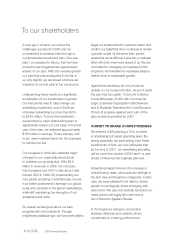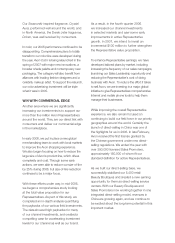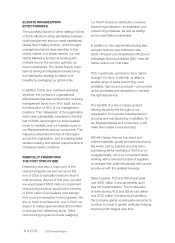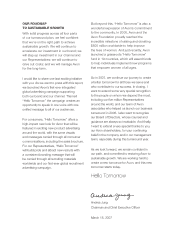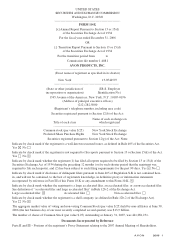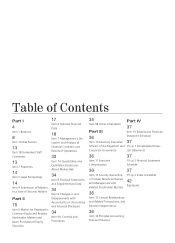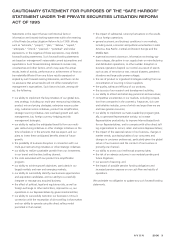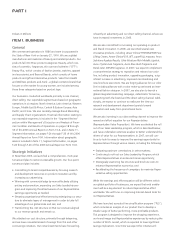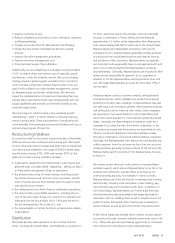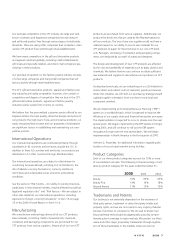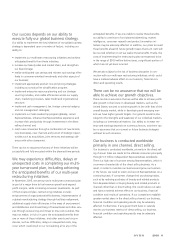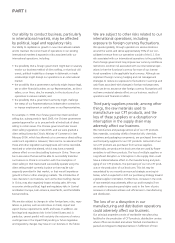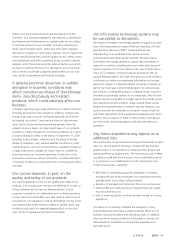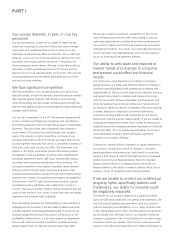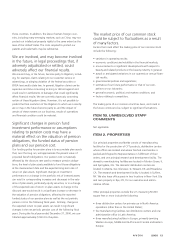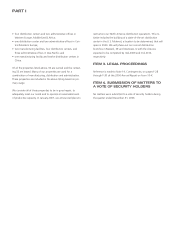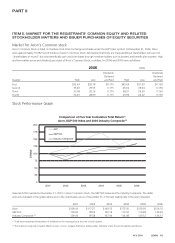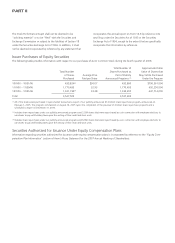Avon 2006 Annual Report Download - page 12
Download and view the complete annual report
Please find page 12 of the 2006 Avon annual report below. You can navigate through the pages in the report by either clicking on the pages listed below, or by using the keyword search tool below to find specific information within the annual report.PART I
In some markets, we use decentralized branches, satellite stores
and independent retail operations to serve Representatives and
other customers. Representatives come to a branch to place and
pick up product orders for their customers. The branches also
create visibility for Avon with consumers and help reinforce our
beauty image. In certain markets, we provide opportunities to
license Avon beauty centers and other retail-oriented oppor-
tunities to bring Avon to new customers in complementary ways
to direct selling.
The recruiting or appointing and training of Representatives are
the primary responsibilities of District Sales or Zone Managers
and Sales Leadership Representatives. In most markets, District
Sales or Zone Managers are employees of Avon and are paid a
salary and a sales incentive based primarily on the increase over
the prior year's sales by Representatives in their district, while in
other markets, those responsibilities are handled by independent
contractors. Personal contacts, including recommendations from
current Representatives (including the Sales Leadership program),
and local market advertising constitute the primary means of
obtaining new Representatives. The Sales Leadership program is
a multi-level compensation program which gives Representatives,
known as Sales Leadership Representatives, the opportunity to
obtain earnings from commissions based on sales made by
Representatives they have recruited and trained, as well as from
their own sales of Avon products. This program limits the num-
ber of levels on which commissions can be earned to three and
continues to focus on individual product sales by Sales Leader-
ship Representatives. Development of the Sales Leadership pro-
gram throughout the world is one part of our long-term growth
strategy. Because of the high rate of turnover among
Representatives, which is a common characteristic of the direct-
selling method, recruitment and training of new Representatives
is continually necessary. As part of our four-point turnaround
plan, we have initiatives underway to standardize global proc-
esses for prospecting, appointing, training and developing
Representatives, as well as our direct selling executives.
As discussed previously, we are also investing in our direct selling
channel in other ways to improve the reward and effort equation
for our Representatives (Representative Value Proposition).
From time to time, local governments and others question the
legal status of Representatives or impose burdens inconsistent
with their status as independent contractors, often in regard to
possible coverage under social benefit laws that would require us
(and in most instances, the Representatives) to make regular
contributions to government social benefit funds. Although we
have generally been able to address these questions in a sat-
isfactory manner, these questions can be raised again following
regulatory changes in a jurisdiction or can be raised in additional
jurisdictions. If there should be a final determination adverse to
us in a country, the cost for future, and possibly past, con-
tributions could be so substantial in the context of the volume
and profitability of our business in that country that we would
consider discontinuing operations in that country.
Promotion and Marketing
Sales promotion and sales development activities are directed at
assisting Representatives, through sales aids such as brochures,
product samples and demonstration products. In order to sup-
port the efforts of Representatives to reach new customers, spe-
cially designed sales aids, promotional pieces, customer flyers,
television and print advertising are used. In addition, we seek to
motivate our Representatives through the use of special incentive
programs that reward superior sales performance. Periodic sales
meetings with Representatives are conducted by the District
Sales Managers or Zone Managers. The meetings are designed
to keep Representatives abreast of product line changes, explain
sales techniques and provide recognition for sales performance.
A number of merchandising techniques are used, including the
introduction of new products, the use of combination offers, the
use of trial sizes and samples, and the promotion of products pack-
aged as gift items. In general, for each sales campaign, a distinctive
brochure is published in which new products are introduced and
selected items are offered as special promotions or are given
particular prominence in the brochure. A key current priority for our
merchandising is to expand the use of pricing and promotional
models to enable a deeper, fact-based understanding of the role
and impact of pricing within our product portfolio.
As previously discussed, we significantly increased spending on
advertising during 2006. We have also increased our investments
in upgrading the quality and size of our brochure in many mar-
kets. We expect this to be an ongoing investment to strengthen
our beauty image worldwide and drive sales positively. Channel
elements, such as high Representative activity and brochure dis-
tribution, are important as well.
From time to time, various regulations or laws have been pro-
posed or adopted that would, in general, restrict the frequency,
duration or volume of sales resulting from new product
introductions, special promotions or other special price offers.
We expect our pricing flexibility and broad product lines to miti-
gate any effect of these regulations.
Competitive Conditions
We face competition from various products and product lines
both domestically and internationally. Worldwide, we compete
against products sold directly to consumers by other direct-
selling and direct sales companies and through the Internet, and
against products sold through the mass market and prestige
retail channels.



